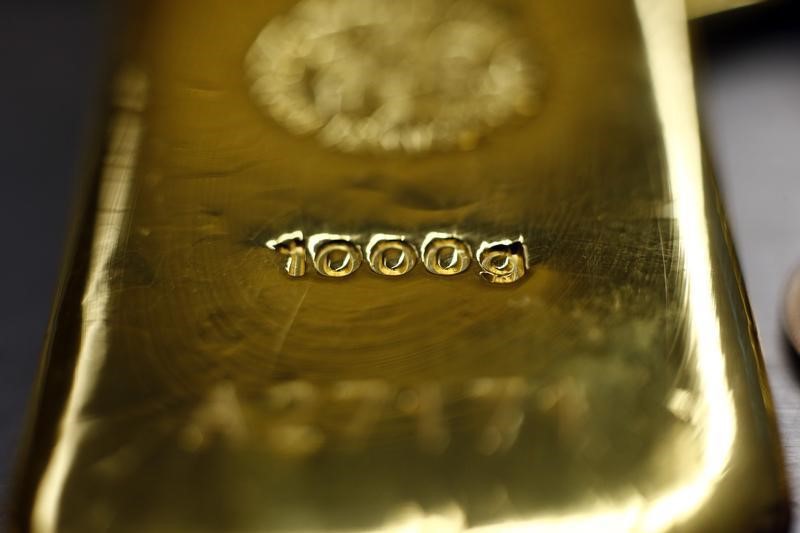Investing.com - Gold prices declined on Tuesday, as the U.S. dollar pushed higher, having regained almost all the ground lost in the wake of Friday’s unexpectedly weak U.S. jobs report.
On the Comex division of the New York Mercantile Exchange, gold futures for June delivery shed $8.70, or 0.71%, to trade at $1,209.90 a troy ounce during U.S. morning hours. A day earlier, gold rallied to $1,224.50, the most since February 17, before settling at $1,218.60, up $17.70, or 1.47%.
Futures were likely to find support at $1,178.20, the low from March 31, and resistance at $1,236.70, the high from February 17.
The U.S. dollar index, which measures the greenback’s strength against a trade-weighted basket of six major currencies, was up 0.7% to trade at 97.88 early on Tuesday.
A stronger U.S. dollar usually weighs on gold, as it dampens the metal's appeal as an alternative asset and makes dollar-priced commodities more expensive for holders of other currencies.
Prices remained supported amid expectations U.S. interest rates will rise at a slower pace than previously thought.
Gold prices are up nearly 6% since hitting a recent low of $1,140.60 on March 17, as indications that the U.S. economy slowed in the first quarter fuelled bets the Federal Reserve will hold off on hiking interest rates until late 2015.
A delay in raising interest rates would be seen as bullish for gold, as it decreases the relative cost of holding on to the metal, which doesn't offer investors any similar guaranteed payout.
Elsewhere on the Comex, silver futures for May delivery dropped 23.7 cents, or 1.39%, to trade at $16.87 a troy ounce, while copper for May delivery tacked on 3.4 cents, or 1.24%, to trade at $2.751 a pound.
Copper prices have been well-supported in recent months as a disruption to mining output in Chile, Indonesia and Australia prompted traders to reassess the outlook for global supply and demand.
Before the recent wave of disruptions, many market analysts anticipated that copper production from mines would exceed demand in 2015 for the first time in six years. Now, some are predicting a deficit.
Prices of the red metal are up almost 14% since hitting a recent low of $2.420 on January 26.
